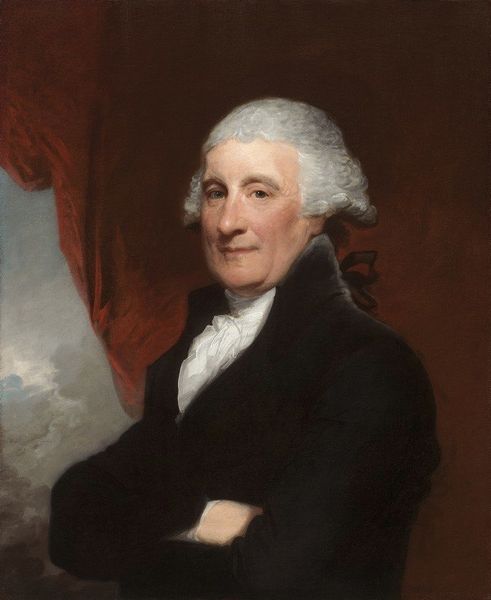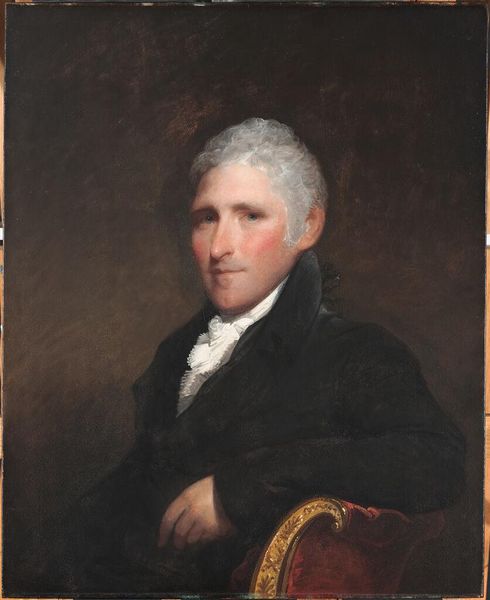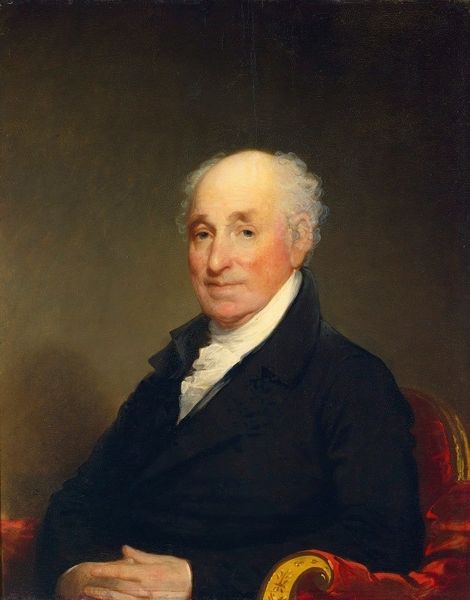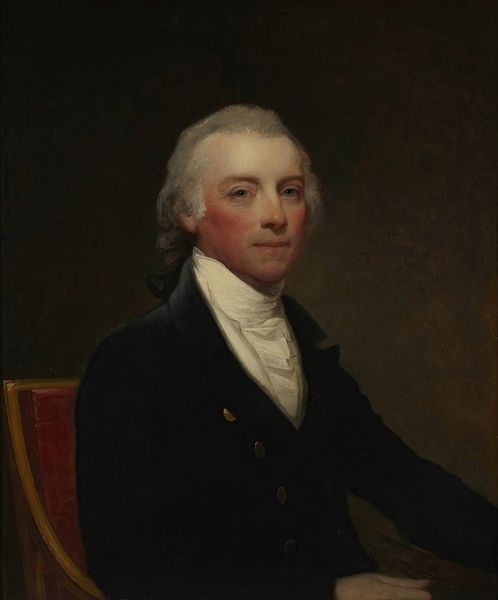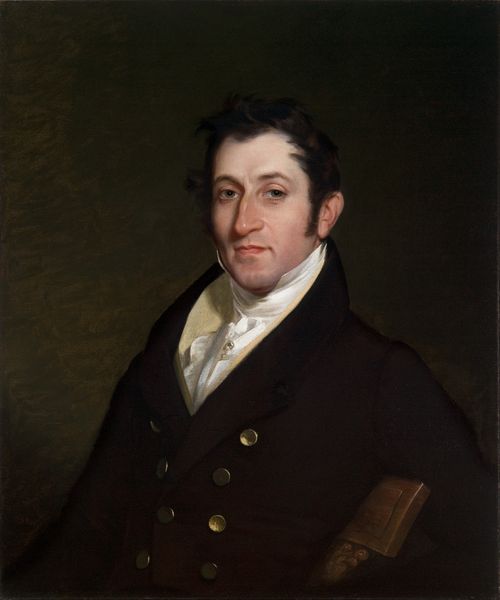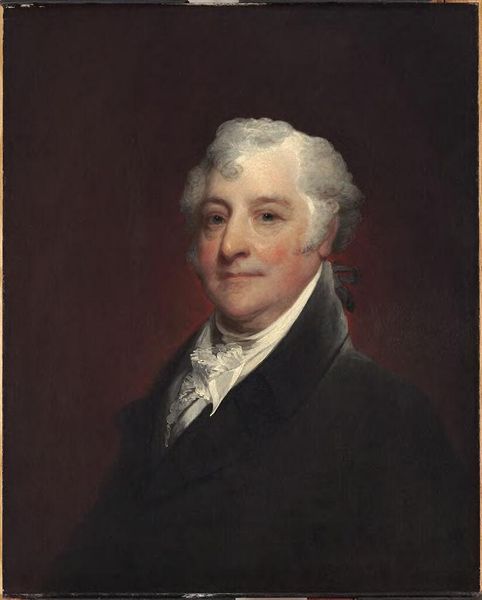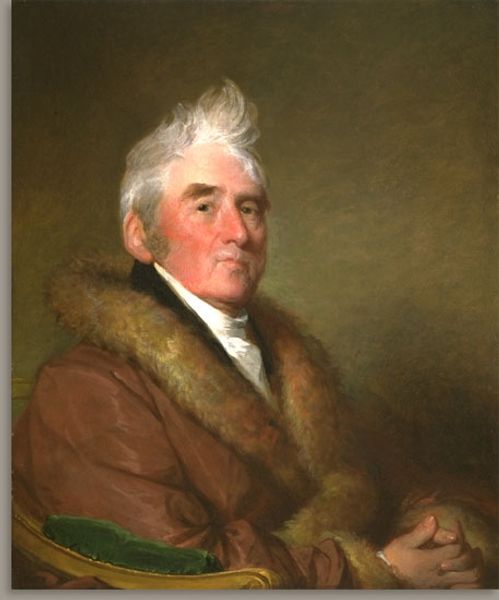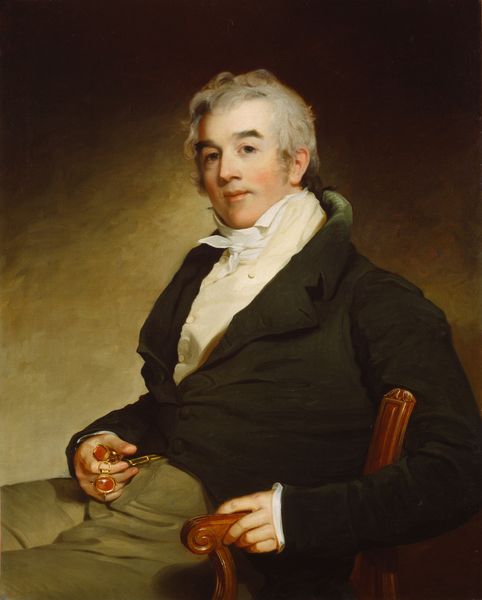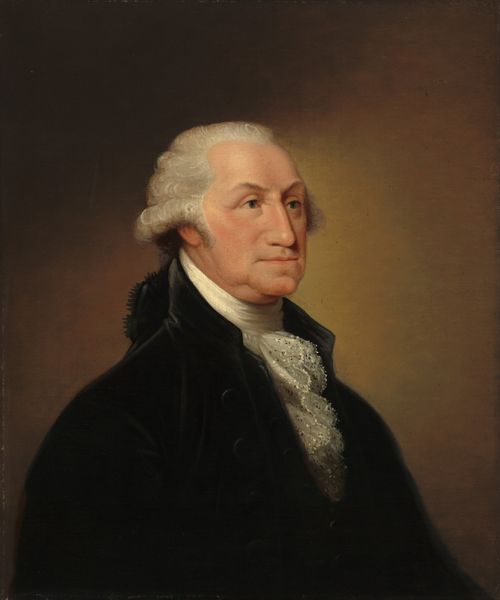
painting, oil-paint
#
portrait
#
neoclacissism
#
portrait
#
painting
#
oil-paint
#
figuration
#
history-painting
#
academic-art
Copyright: Public domain
Curator: Here we have Gilbert Stuart's 1822 portrait of James Monroe, rendered in oil paint. My first impression is a subdued gravitas; the color palette, primarily blacks and reds, speaks of power, yet there is a certain contemplative softness to his gaze. Editor: It’s fascinating how Stuart manages to depict Monroe's position of power so straightforwardly. But the handling of the materials is quite clever too: notice the juxtaposition between the crisp linearity of his suit and the gentle drape of the red curtain in the background, that balance speaks to a certain material elegance of governance, of office. Curator: Yes, the red is compelling, a symbol deeply embedded in Western visual culture, linked to authority and prestige. The context here is unavoidable: this is a portrait of a president made during his second term, painted by one of the most successful American portraitists of his time. I am curious about its intersection with broader cultural discourses about national identity. It's intriguing to observe how notions of masculinity are portrayed within political representation at the time. Editor: Absolutely. And when we consider the means by which such imagery was produced and disseminated - think about Stuart's studio practices, the networks of patronage - we begin to appreciate the role of art not just in representing power, but also in solidifying it. He knew he was working for and catering to the establishment. Curator: Exactly, Stuart’s neoclassical style reflects an appeal to enlightenment ideals and civic virtue; the very foundation on which the republic supposedly stood. Consider the symbolism: the books in the background hinting at intellect and experience. Monroe's poised position with the letter—a tangible connection to decision-making and the execution of policy. How are these symbols being consumed by different demographics in American society? Whose views were valued? Whose were suppressed? Editor: Don't forget the materials themselves! Stuart would've been incredibly skilled in mixing and preparing his oil paints and this process of production matters too. Each layer of glaze and paint applied to the canvas to produce the look, with considerations regarding finish, drying time and even texture adding additional considerations beyond merely capturing the President's image; rather his very essence would be conveyed via deliberate handling and appreciation for their potential. Curator: True. So when reflecting on Stuart's "James Monroe", it compels us to explore beyond simple representations, towards the dynamics of identity, class and authority that this work is imbued with, even today. Editor: Indeed. By delving into process and historical conditions, we realize the true richness lies not just in *who* is depicted, but *how* it’s done.
Comments
No comments
Be the first to comment and join the conversation on the ultimate creative platform.


